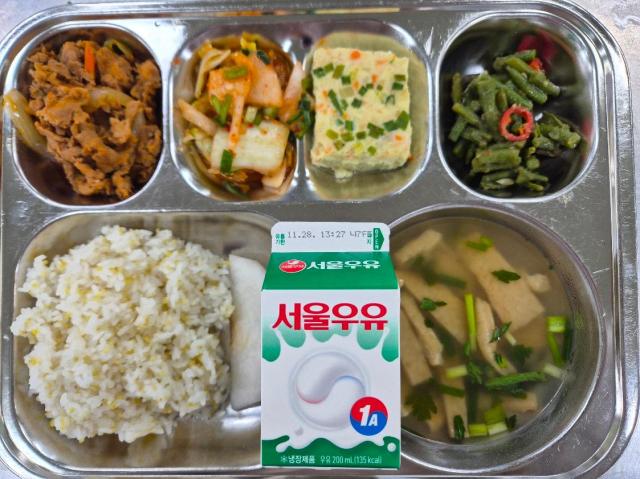
On Friday, about 94,000 members of the National Solidarity Council of School Irregular Workers launched a nationwide strike. The group represents non-teaching staff who keep schools running — cafeteria cooks and assistants, childcare workers, meal distributors, administrative aides. Negotiations with the Education Ministry and 17 provincial and metropolitan education offices have stalled over wages, safety conditions, and benefits.
The strike began in Seoul, Incheon, Gangwon, Sejong, and North Chungcheong, and will expand southward over the coming days: Gwangju, Jeolla, and Jeju on Saturday; Gyeonggi, Daejeon, and South Chungcheong on Dec. 4; and the Yeongnam region on Dec. 5.
Many traveled for hours in winter weather to join the walkout — even if it meant leaving behind the children they feed daily.
None of their long-standing demands — from raising meager base pay to installing basic ventilation systems — have been met.

Baek joined the strike after the local education office backed out of its promise to install ventilation systems following the diagnosis of a Gwangyang cook with lung cancer. Another colleague, aged 49, lost her hand in a kitchen accident last year.
“We grind garlic and ginger by hand to make kimchi every day,” she said. “When friends die of lung cancer, it’s terrifying to return to that kitchen.”
Progressive teacher unions and 125 civic, labor, and political groups expressed solidarity. The conservative Korean Federation of Teachers’ Associations (KFTA), the country’s largest teachers’ body, condemned the walkout for disrupting school operations and students’ rights.
Due to the strike, about 1,000 of the nation’s 3,298 schools couldn’t provide proper meals. Many replaced hot lunches with bread and juice; some after-school care programs — known as Neulbom classes — were suspended.
The Education Ministry largely kept its distance.
“Since this is a legitimate strike under the Labor Union Act, it is difficult for us to comment,” a ministry official said. “However, even if lawful, it would be best if there were no disruptions to meal services for students.”
Below-minimum pay — and carcinogenic fumes
According to the Seoul education office, a kitchen worker’s base monthly salary is 2,066,000 won ($1,403) — lower than the legal minimum wage when converted into a standard monthly rate of 2,096,270 won for a 40-hour week. Even with seniority, family, and hazard allowances, an 11-year veteran earns roughly 2.7 million won, and many receive no pay during school holidays.
The gap is sharper for roles involving hot oil, boiling trays, and 20–30 kg rice sacks.
This year’s base pay for “Type-2 education public employees” — cooks, administrative assistants, office support staff — remains 30,270 won below the minimum wage. Hazard pay is 50,000 won ($34) per month, despite daily exposure to toxic cooking fumes.
The World Health Organization classifies cooking fumes as a Group 2A carcinogen. To date, 175 cafeteria workers have had lung cancer recognized as an occupational disease; at least 15 have died.

On campuses, the mood ranged from resigned to supportive.
“Kids actually enjoy eating bread for once. Some bring their own meals — one even brought mala xiangguo,” said a teacher at an elementary school in Bucheon. “Most teachers understand the strike’s purpose and quietly support it.”
Working parents face the sharpest inconvenience.
A mother in her 40s said, “I’m a working mom. If I have to pack lunch, I need to wake up at dawn before work. It’s exhausting.”
Another mother in her 50s said, “It breaks my heart to think about how hungry my boys must be when they can’t eat properly.”
Others sympathized with the workers.
A father in his 50s said, “My daughter will also become a worker one day. If improving labor conditions means a few days of inconvenience, that’s worth it.”
A mother with two high school daughters added, “As a parent, I support them. Eating bread for a few days won’t harm their health.”
A growing workforce with shrinking visibility
Today, around 180,000 people work in non-teaching education roles — roughly 40 percent of the country’s 450,000 teachers. Job categories have ballooned to more than 80, from sports instructors to childcare aides, yet their struggles often fade from public conversation, overshadowed by debates on teacher rights and educational reform.
Their walkout this week forces a closer look at a system that offers free lunches for students — but leaves those who prepare them fighting for a living wage, a ventilated kitchen, and recognition of their role in schools.
Copyright ⓒ Aju Press All rights reserved.



